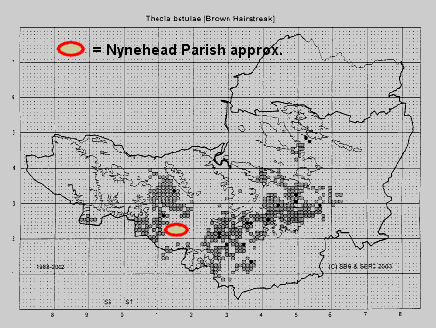THE BROWN HAIRSTREAK
Thecla betulae
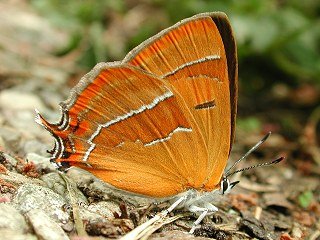
1. Brown Hairstreak David Manners proposed that 'we' - that's men women and children! - might like to keep an eye open for an uncommon butterfly called the Brown Hairstreak (or Thecla betulae to give it its ‘proper’ name) which, while found fairly abundantly in the surrounding neighbourhood has yet to be recorded within the Parish of Nynehead. Just for the record, below is a map showing the distribution of Thecla betulae in Somerset. We appear to be in an area free of Hairstreakers! The nearest site to Nynehead known for Thecla betulae is probably Thurlbear Quarry Lands near Taunton. In Nynehead we have the environment but lack evidence for Brown Hairstreaks.
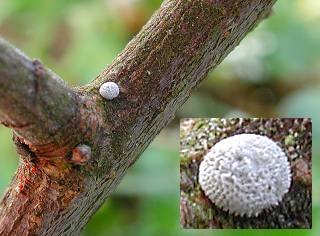
2. Egg of Thecla betulae
During the winter is probably the easiest time to find that evidence. The butterfly itself is only around towards the end of summer. The Brown Hairstreak prefers to lay her eggs at the end of summer in a very particular manner and place which is abundant locally. She lays eggs singly on blackthorn or 'sloe' at the base of the fork where new wood sprouts from old - see photo 2. Moreover, she does so in a very 'child-friendly' fashion as, rather than high up, she prefers to lay 0.8 to 1.5 metres above the ground - that's two and a half to five feet in old money. The eggs are pure white and, although small (less than 1 mm in diameter - that's about the cross-section of a grain of rice) they tend to show up well against the wood which is dark. When magnified, the eggs have the appearance of miniature sea urchins. Not all blackthorns in the area offer the same prospects to egg hunters; blackthorns that have not been mindlessly thrashed to pieces by mechanical flails are likely to prove more fruitful than those that have been!
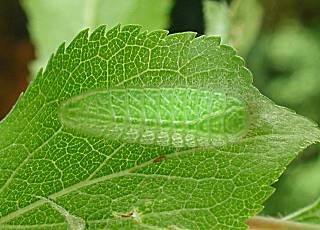
3. Young caterpillar
The eggs of the Brown Hairstreak remain visible and unhatched from November till about April when they hatch into small, yellowish grubs that become greenish caterpillar. During winter when most of the leaves have gone, if there are any eggs around they should be comparatively easy to spot. Needless to say, anyone lucky enough to find Thecla eggs should observe but not touch or disturb them!
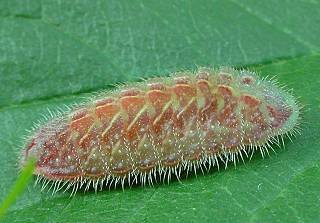
4. Mature caterpillar
After a couple of months solid feeding the caterpillars will have changed colour, (photo 4) and be mature and ready to pupate (photo 5 - see below). Pupation takes place on the ground and the imago or final butterfly emerges in late August or September which will be the only time we have a chance to see them in all their glory. They mate and lay their eggs from Ooctober and thus the cycle repeats itself. Males are apparently hard to see as they tend to congregagte high up in a strategic tree, whereas females tend to wander about singly on, or close to, the ground. Only occasionally do they deign to unfold their wings and display the characteristic orange patches on their wings that distinguish them from the males.
